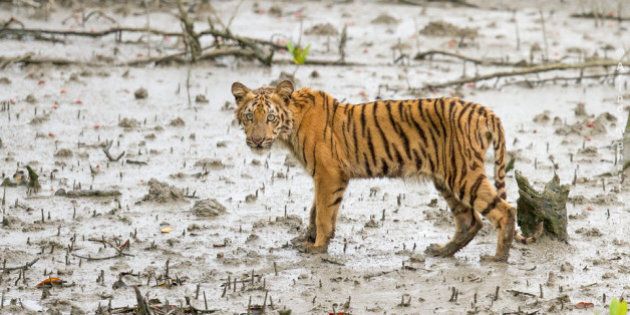
Written by Rinjan Shrestha, Conservation Scientist, WWF's Eastern Himalayas Program
Five years ago, the world's tiger countries came together in the face of drastic tiger population decline to set an ambitious goal. With as few as 3,200 wild tigers remaining, a 97 per cent decline from historic populations, governments agreed to double the number of wild tigers by 2022 -- the next year of the tiger. Five years into this ambitious campaign, we have started to see some extremely promising results in Nepal, a country which is becoming known for its innovative work to protect charismatic species like the tiger, rhino and elephant.
Earlier this year, we shared Nepal's significant achievement of two years without a poaching incident. Today we are sharing the results of the community empowerment, anti-poaching and habitat management work being done in Nepal. We are delighted to announce that over the past year, we have seen an increase in tiger population and density in the Banke-Kamdi landscape. Promisingly, we also saw re-colonization of habitats by tigers this year, and an increase in habitat use. In short, more tigers are using more land -- a win for species and habitats!
We didn't get here overnight. Tiger recovery has been on the agenda in Nepal since early 2000 and we still have a long way to go before truly celebrating. These results are thanks to years of work designating key habitats and corridors as protected areas, increasing security from the Nepalese army, initiating habitat management activities within the protected areas, and engaging locals in conservation practices.
This final tactic -- engaging locals in conservation -- is the one that is getting the most attention today. With the support of WWF-Canada, WWF Nepal and partners have trained 46 local people on cutting edge techniques such as setting camera traps, population surveys, and occupancy surveys to monitor tiger and prey population and habitat. These are not casual reports from the public but scientifically rigorous data and techniques from highly trained individuals.
Working directly with individuals on the ground, who live alongside the tigers, allows us to not only get a much more detailed picture of the situation, but also to change local attitudes about a species that is endangered but also dangerous. Many of the local groups we work with now take pride in the tiger monitoring work they do, and feel more connected and responsible for protecting the returning animals.
As success grows, so too does our efforts in Nepal. With more tigers, we must make sure that the protected areas are diverse enough to support the increased numbers. We must add new protected areas, and continue our anti-poaching and awareness-raising efforts. Finally, we must continue engaging our local partners in research and monitoring activities to ensure their support for the long-term presence of tigers in the region. Our work is not done, but it is nice to finally start to see some fruits from our labours!
Find out more good news about tiger populations in Bhutan!
MORE ON HUFFPOST:
